You can trust Cyclingnews
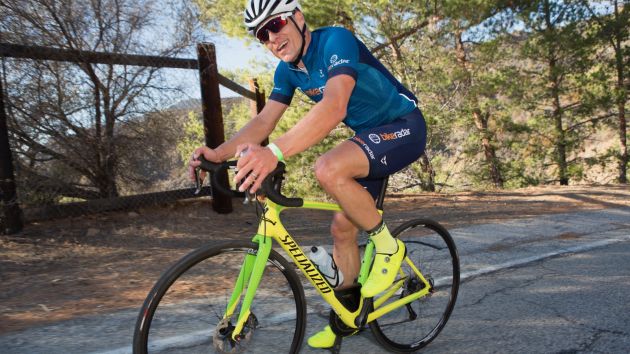
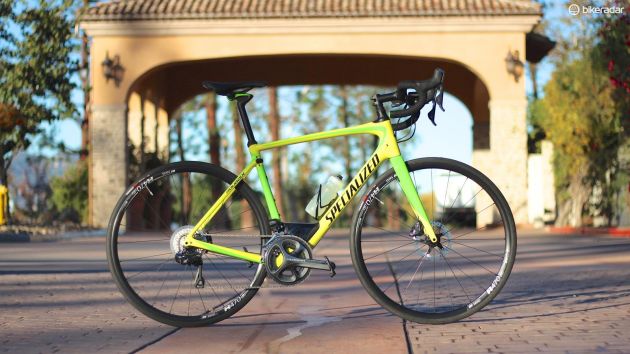
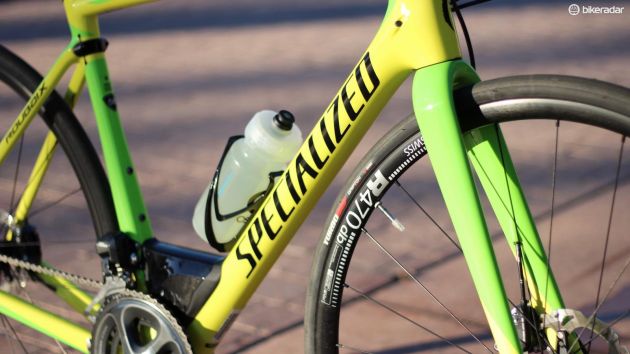
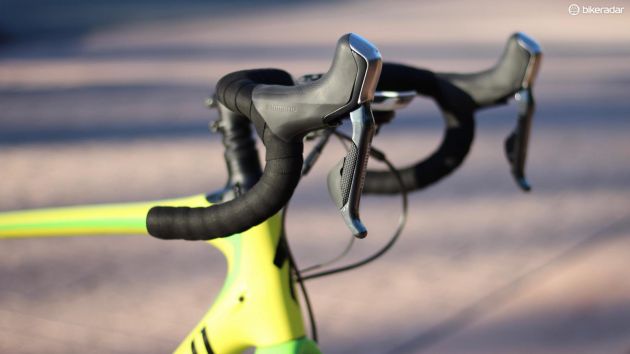
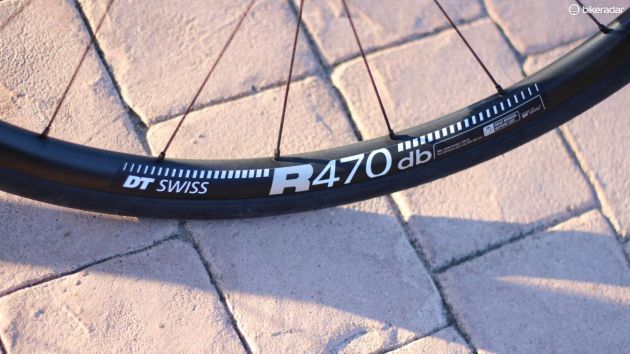
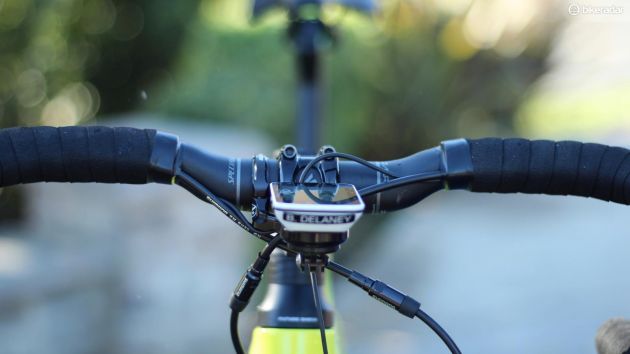
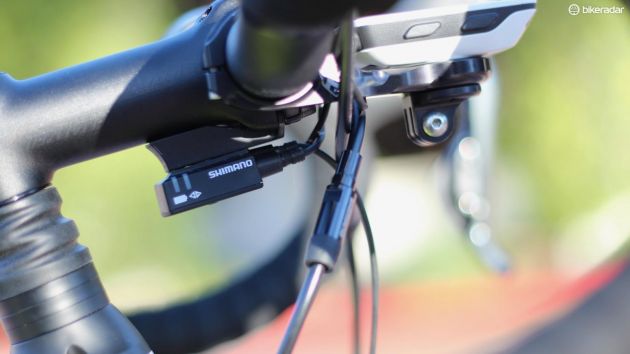
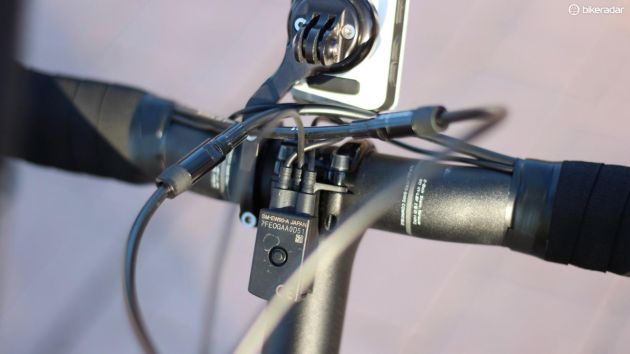
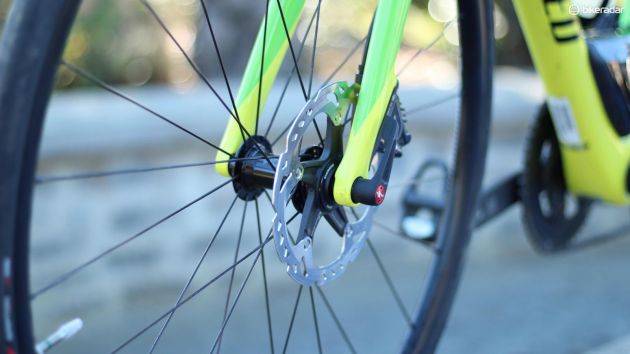
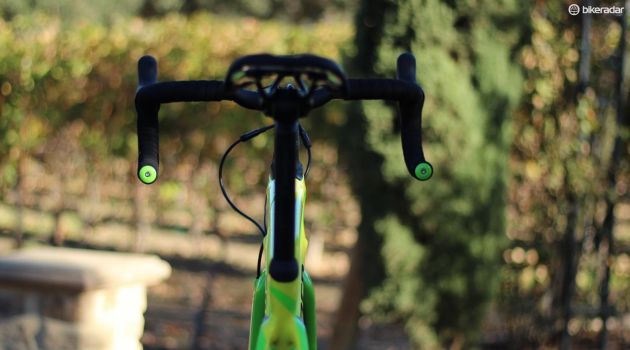
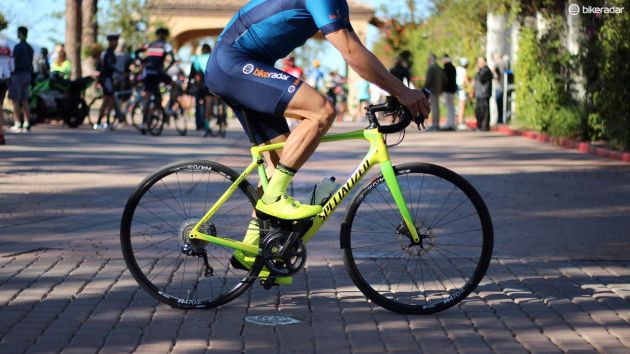
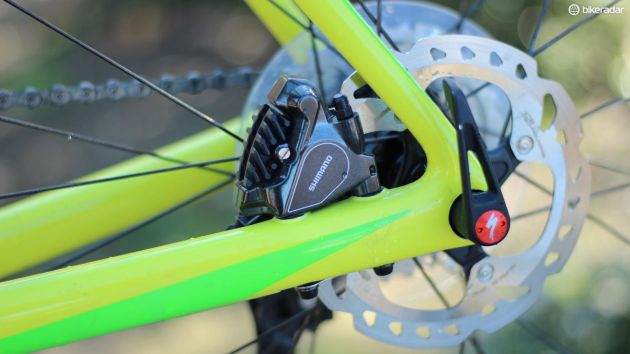
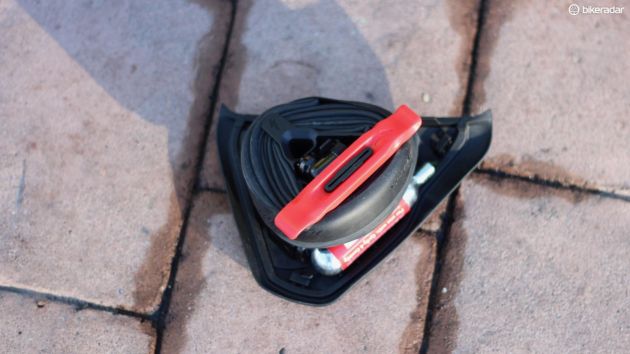
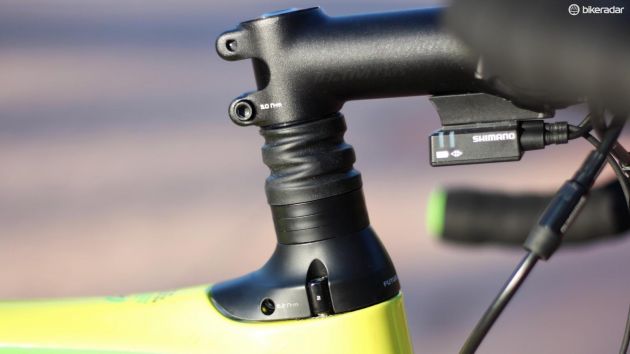
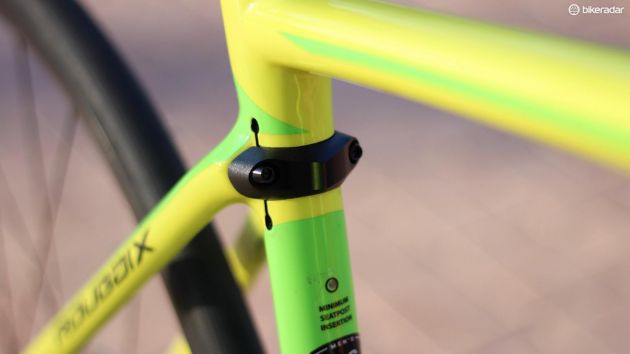
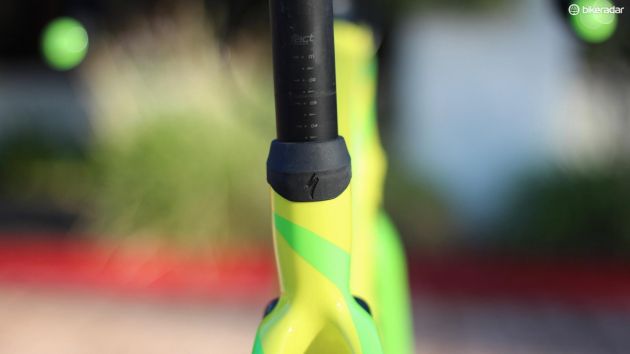
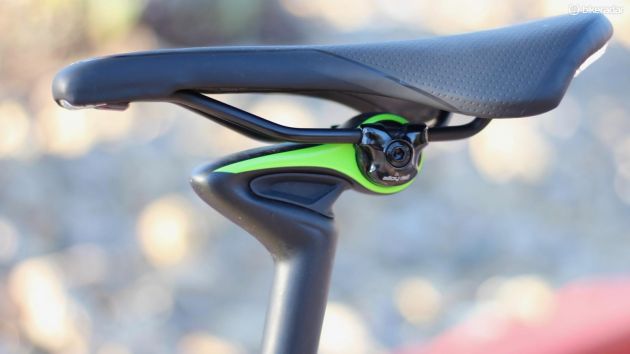
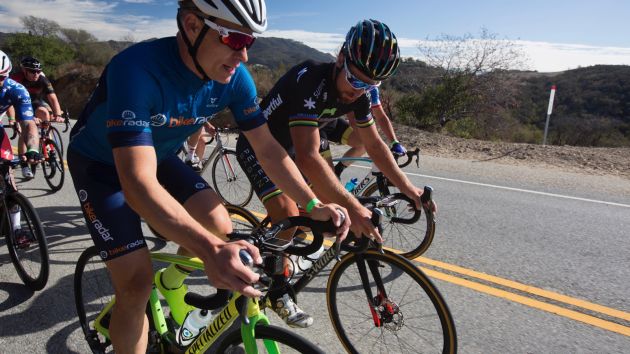
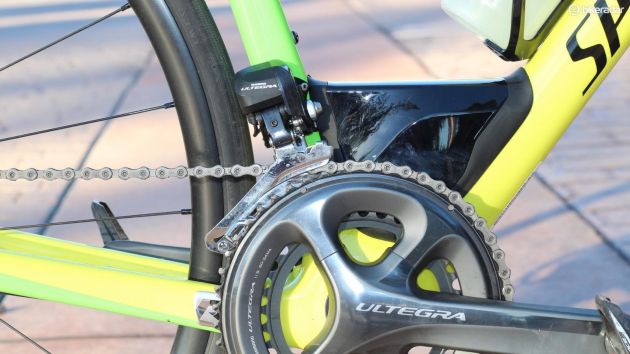
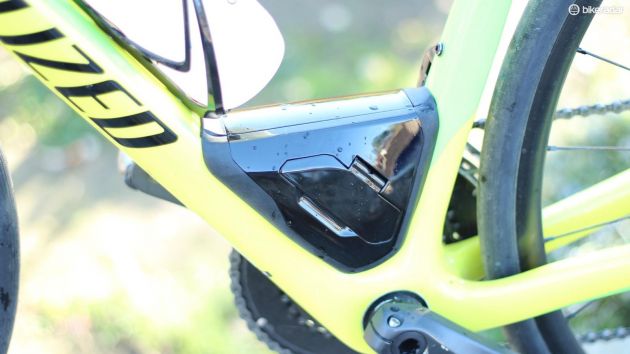
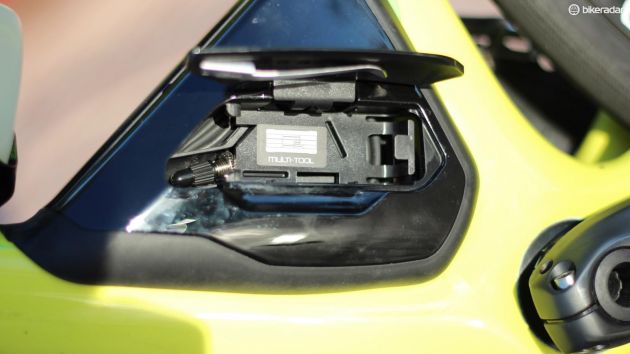
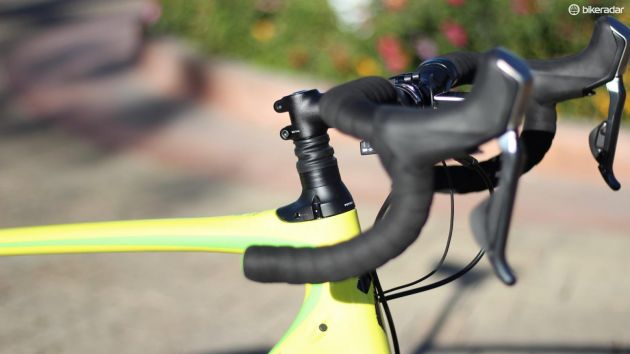
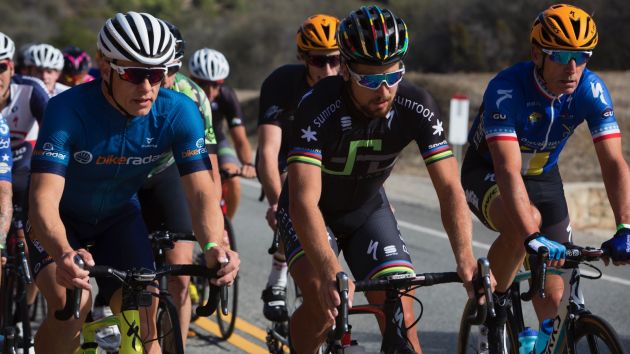
This article originally appeared on BikeRadar
A road bike with bona fide front suspension — this is the new Specialized Roubaix. While my colleague Warren Rossiter has ridden the new Roubaix quite a bit in Belgium and in England, and I have been rattling it over dirt roads in Colorado, I tested the Roubaix Expert Ui2 model at the Peter Sagan VIP Ride in southern California. I was interested to find out how the bike felt in pack riding on relatively smooth roads.
A few of us at the Sagan ride were on Roubaix demo bikes with the distinctive Future Shock atop the headset. Many riders including Sagan did the same thing when stopped at a light or a rest stop; they would press the bars down to feel the two centimeters of easy travel and the spring-loaded return.
It doesn't take much force to get the bars to bob up and down on the steerer, especially if you are using the soft or medium spring in the shock. When at a stop, it feels weird. Similarly, there's no getting around the aesthetics; the Future Shock looks like a giraffe in a turtleneck.
Once on the road, though, the bike's front end doesn't feel different most of the time. Even when riding smooth road and watching the stem bobbing along, it doesn't feel unstable or like it's even really moving.
When hitting abrupt hard bumps you can feel it move, but not necessarily in a bad way. However, it dives under hard braking, which is an odd sensation to have the bars drop by two centimeters.
You have to compare this bike to the Trek Domane, which has a steerer tube that bows fore and aft, and an integrated seat tube and seatmast that also bow fore and aft. The Roubaix's rear end is similar with the long CGR post flexing generously and is bolted way down low in the seat tube for extra fore and aft movement.
The Roubaix's front end doesn't bow at all, but moves up and down. It's been compared to MTB suspension, but that's not quite adequate; a mountain bike fork allows the front wheel and fork to move, suspending the front end of the bike. Since the Future Shock is higher up, it suspends the rider's arms and torso. Anything that hits the front wheel still makes it up through the fork and into the frame.
Rougher terrain
Approaching rough terrain, my instinct is to stand up or at least unweight the saddle a little. On the Roubaix, maybe you should just stay seated. The bars will move to absorb, but you can still feel the hits at the pedals as the frame isn't suspended. Somewhat similar to the Domane, if you stay seated, the long CGR post will deflect noticeably over bumps.
For regular road riding when you're not thinking about unweighting the bike, the Roubaix just kinda floats, similar to the feeling of riding on 40mm tires at 60psi.
The bike has a really stiff bottom bracket area. There is plenty of snap when accelerating and it feels easy to climb — especially with the stock compact crank and 11-32 cassette that come on this Roubaix Expert Ultegra Di2.
At the Sagan Gran Fondo, we did the 7-mile Mulholland Drive climb twice. I was grateful to have the low gear to spin the last mile at six percent when guys started pushing the pace and gravity put the hurt on me.
Dropping down the winding Decker descent, the Roubaix felt great. With a low bottom bracket and wide, grippy tires, the bike was easy to lean back-and-forth through S bends.
Hydraulic brakes are a given when riding steep descents on an endurance bike like this, or at least they should be. Yes, of course you can descend on rim brakes. We've all been doing it for years. But being able to do hard decelerations with a single finger on each lever feels right.
I enjoyed listening to other riders in the group talk about how we "don't need" disc brakes on road bikes. No, of course not — and we don't need Di2, either, but it sure is nice!
In any event, the California descents all had bot dots (the domed reflectors in the center of the road). For cars and bikes alike, they serve their purpose — you can clearly see and feel the center of the road that you should not cross. Hitting them on a bike at speed and leaned into a corner is a little sketchy, however. I intentionally hit them a few times on this bike, and while the vibrations were still present, they were far smaller than on a regular bike.
SWAT storage
Another weird-looking but functional thing on this bike is the removable SWAT box, which mounts at the bottom of the main triangle. A multi-tool tucks into the outside compartment, then a tube, CO2 canister, tire lever and CO2 breaker fit into the box, which pops open for access.
I generally dig the concept of integrated storage, especially when it is integrated straight into the down tube like on the Stumpjumper. If you don't like it on the Roubaix you can pop it off.
The rest of the spec on the Ultegra Di2 bike is a mix. I'm not a fan of the saddle, which is too padded for my tastes. I love the flattened top, and the short reach and shallow drop of the handlebar, but the riser part of the bar… I still think looks weird on a road bike. Specialized first started doing this with the Venge ViAS as a way to reduce frontal profile on the aero bike, but I don't really get it on the Roubaix.
For the Roubaix platform as a whole, Specialized has walked away from the rubbery Zertz attached to the fork or frame and replaced it with some straight-up suspension up front, and a long, bending seatpost at the rear — which, in fact, has a bit of Zertz tucked into the cobra-like bend at the top.
Bottom line… suspension works
That little 2cm of suspension definitely softens the ride. After 85 miles and 7,500ft of climbing my shoulders and neck weren't tight at all, which isn't always the case these days.
The Future Shock, which comes with three springs (soft, medium and firm), does add a bit of weight, as do the hydraulic brakes, but there is clearly a benefit to both.
When in the saddle, the bobbing that is visually obvious doesn't feel as strange or even as pronounced as you would think. The ride is just… softer.
Stay tuned for a head-to-head comparison of the Specialized Roubaix and the Trek Domane.
Name: Roubaix Expert Ui2
Built by: Specialized
Price: £3,800.00 / US$4,600.00 / AU$ N/A
Available Colours: UK: black, US: black or neon yellow/green
Available Sizes: 49cm 52cm 54cm 56cm 58cm 61cm 64cm
Brakes: Shimano Ultegra, hydraulic, resin pads w/fins
Cassette: Shimano Ultegra, 11-speed, 11-32t
Chain: Shimano Ultegra, 11-speed
Cranks: Shimano Ultegra Compact
Fork: Roubaix disc, FACT 11r carbon, 12x100mm thru-axle
Fork Offset: 44
Frame Material: FACT 10r carbon
Front Derailleur: Shimano Ultegra Di2 6870, 11-speed, braze-on
Front Tyre: Turbo Pro, 700x26mm, 60TPI, folding bead, BlackBelt protection
Handlebar: Specialized Hover Expert Alloy, 15mm rise, 125mm drop, 75mm reach
Head Angle: 73.5
Rear Derailleur: Shimano Ultegra Di2, long cage, 11-speed
Rear Tyre: Turbo Pro, 700x26mm, 60TPI, folding bead, BlackBelt protection
Saddle: Phenom Expert GT, Adaptive Edge design, hollow titanium rails, 143mm
Seat Angle: 73.5
Seatpost: Specialized CG-R, FACT carbon, single bolt, 27.2mm
Shifters: Shimano R785 Di2, 11-speed
Stem: Specialized Pro SL, alloy, 4-bolt
Trail: 5.5
Wheelset: DT R470 Disc, thru-axle, 2Bliss Ready
Year: 2017
Chainring Size (No of Teeth): 34 50
Chainstays (cm): 41.5
Seat Tube (cm): 50.1
Top Tube (cm): 56.2
Wheelbase (cm): 99.3
Frame size tested: 56cm